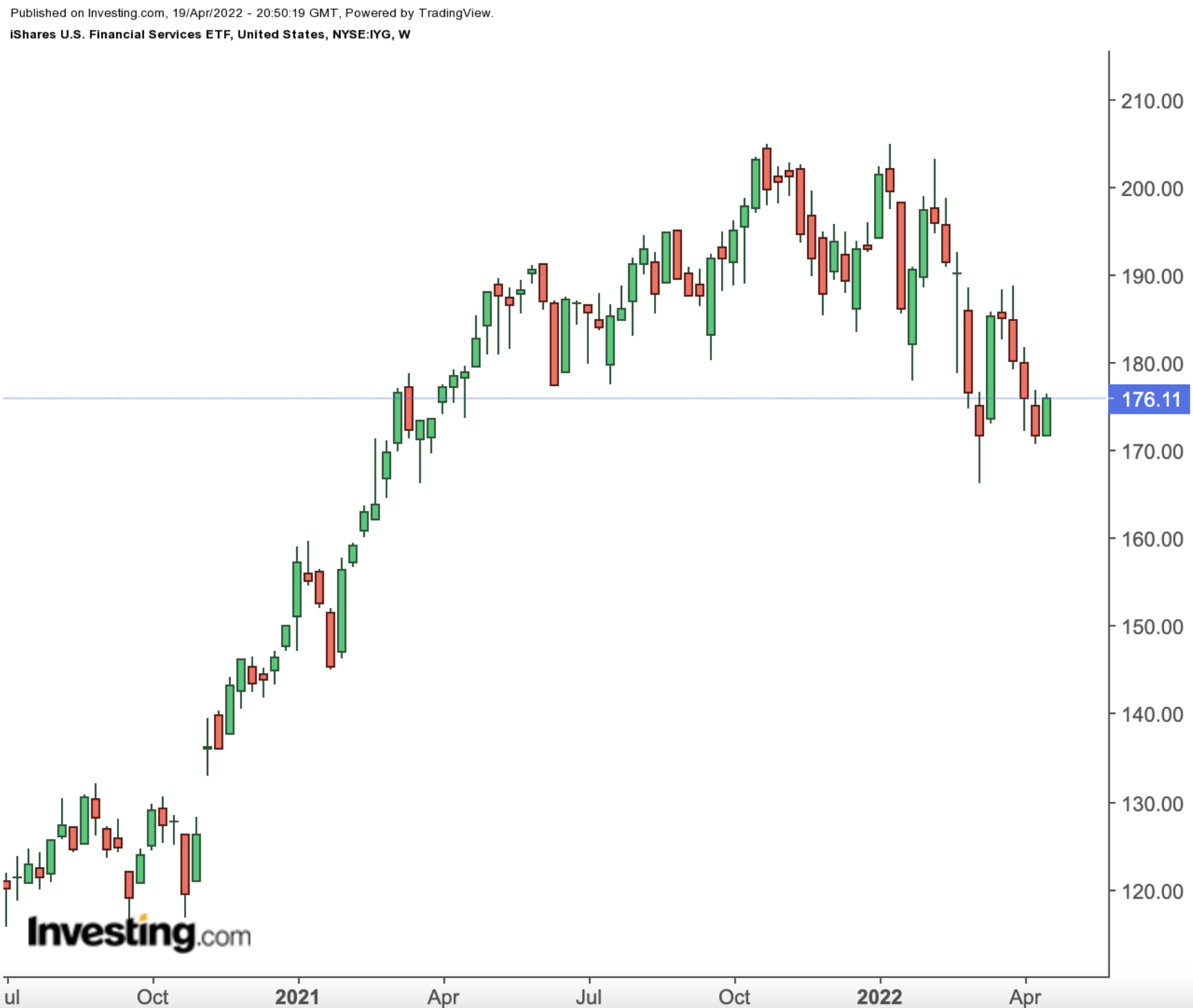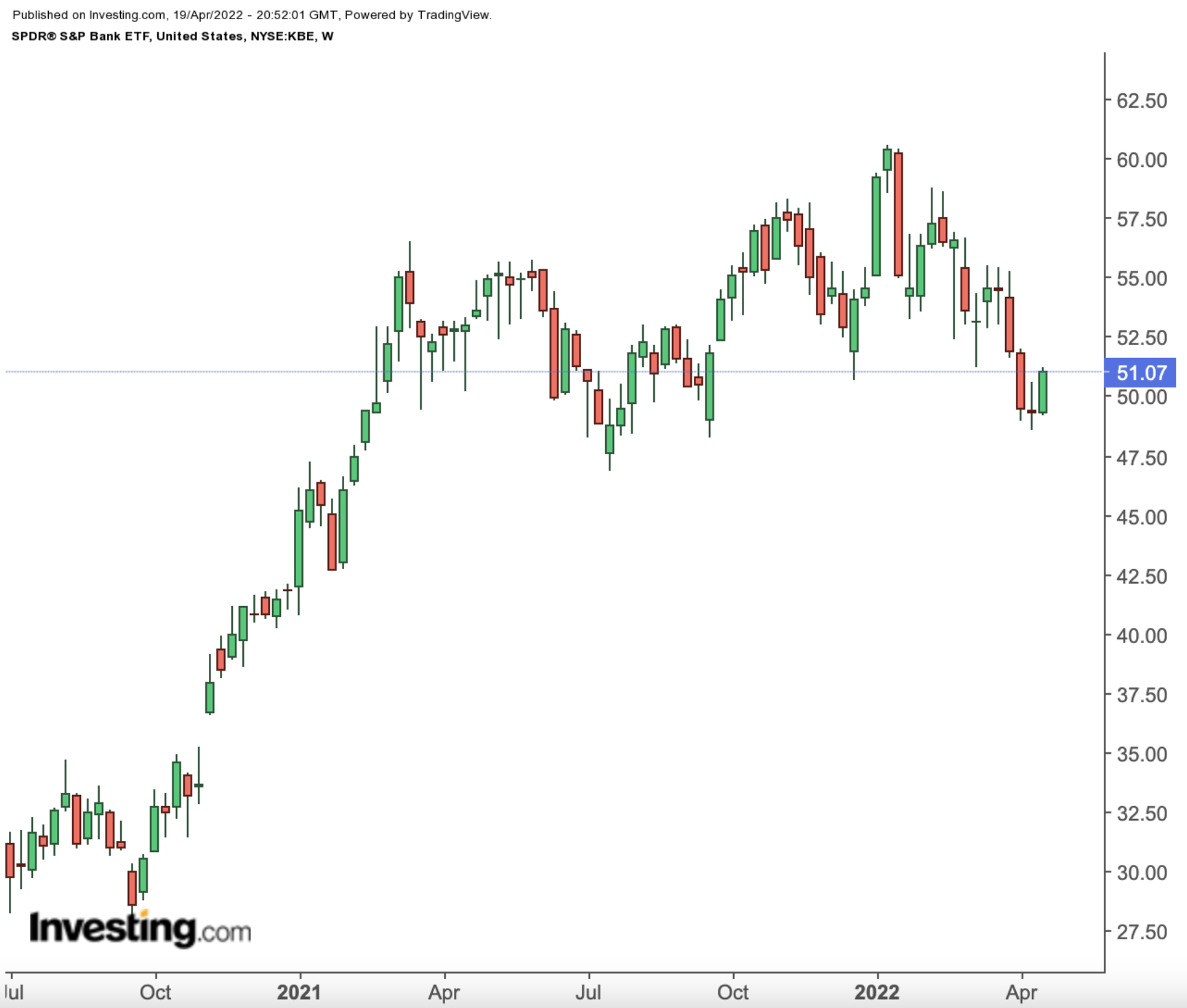Hyperscale Data reduces debt by $30 million for AI, bitcoin expansion
Banks and other financial names have reclaimed Wall Street’s spotlight this earnings season amid the perspective of rising interest rates. Moves in those shares naturally affect the prices of exchange-traded funds (ETFs) that focus on such stocks.
JPMorgan Chase (NYSE:JPM) kicked off the Q1 season last week with a worse-than-expected report that raised investors' eyebrows. Profits of $8.28 billion meant a 42% decline from a year earlier. Charles Schwab (NYSE:SCHW) and Sierra Bancorp (NASDAQ:BSRR) were two other banks that missed analysts’ EPS expectations for the quarter.
Meanwhile, shares of Bank of America (NYSE:BAC) surged more than 4% after the release of better-than-expected Q1 financials on Apr. 18. EPS of 80 cents beat analysts’ expectations.
Other banks that exceeded Wall Street’s consensus EPS targets include Citigroup (NYSE:C), Goldman Sachs (NYSE:GS), Morgan Stanley (NYSE:MS), State Street (NYSE:STT), and most recently, Bank of New York Mellon (NYSE:BK).
The benchmark 10-year US Treasury yield is nearing 3%, hovering at multi-year highs. In such an environment, financial names get increased attention. These institutions borrow money on the short end of the curve but lend at the long end. As the yield steepens, the spread between deposits and loans typically benefits banks and improves their net interest margin.
Thus, many investors are still optimistic about financial stocks despite mixed earnings reports. We recently discussed the iShares U.S. Financial Services ETF (NYSE:IYG), which has declined 8.7% so far in the year.

Today’s article introduces two other ETFs for broad exposure to financial shares. However, we should remind readers that the outlook for banks could also change if the yield curve were to flatten. Therefore, further due diligence would be appropriate before loading up on financial shares.
1. SPDR S&P Bank ETF
- Current Price: $51.07
- 52-week range: $46.86 - $60.60
- Dividend yield: 2.43%
- Expense ratio: 0.35% per year
The SPDR® S&P® Bank ETF (NYSE:KBE) invests in a wide range of financial shares. The fund started trading in November 2005.

KBE, which has 100 holdings, tracks the returns of the S&P Banks Select Industry Index, an equal-weighted index. With regards to sub-sectors, we see regional banks (77.72%), thrifts & mortgage finance (13.38%), and diversified banks (6.09%), among others.
The top 10 stocks in the portfolio account for close to 13% of $2.67 billion in net assets. Among those names are Jackson Financial (NYSE:JXN), Voya Financial (NYSE:VOYA), Northern Trust (NASDAQ:NTRS), AXA Equitable Holdings (NYSE:EQH), and Essent Group (NYSE:ESNT).
KBE hit a multi-year high in early January. However, the ETF is down 6.4% year-to-date. Trailing P/E and P/B ratios are 10.28x and 1.17x. Readers who expect the negative pressure on financials to decrease could consider buying the dips.
2. First Trust Financials AlphaDEX Fund
- Current Price: $45.39
- 52-week range: $41.13- $48.99
- Dividend yield: 1.98%
- Expense ratio: 0.61% per year
Our next choice for today is the First Trust Financials AlphaDEX® Fund (NYSE:FXO). It invests in financial stocks based on several growth and value factors. The fund started trading in May 2007, and net assets stand at 1.4 billion.

FXO, which tracks the StrataQuant® Financials Index, has 100 holdings. Shares of investment banking and brokerage services stocks comprise about a third of the fund. Next in line are non-life insurance (29.33%); banks (21.80%); finance and credit services (7.23%).
Close to a fifth of the portfolio is held in the top 10 stocks. LPL Financial (NASDAQ:LPLA), Cincinnati Financial (NASDAQ:CINF); Raymond James Financial (NYSE:RJF), and Alleghany (NYSE:Y) are among those names.
We believe FXO deserves your attention. The ETF is down about 1.9% so far in 2022 but still up 4.8% in the past 12 months. Like the KBE fund, FXO also has come under pressure since mid-January. Trailing P/E and P/B ratios are 8.42x and 1.33x.
